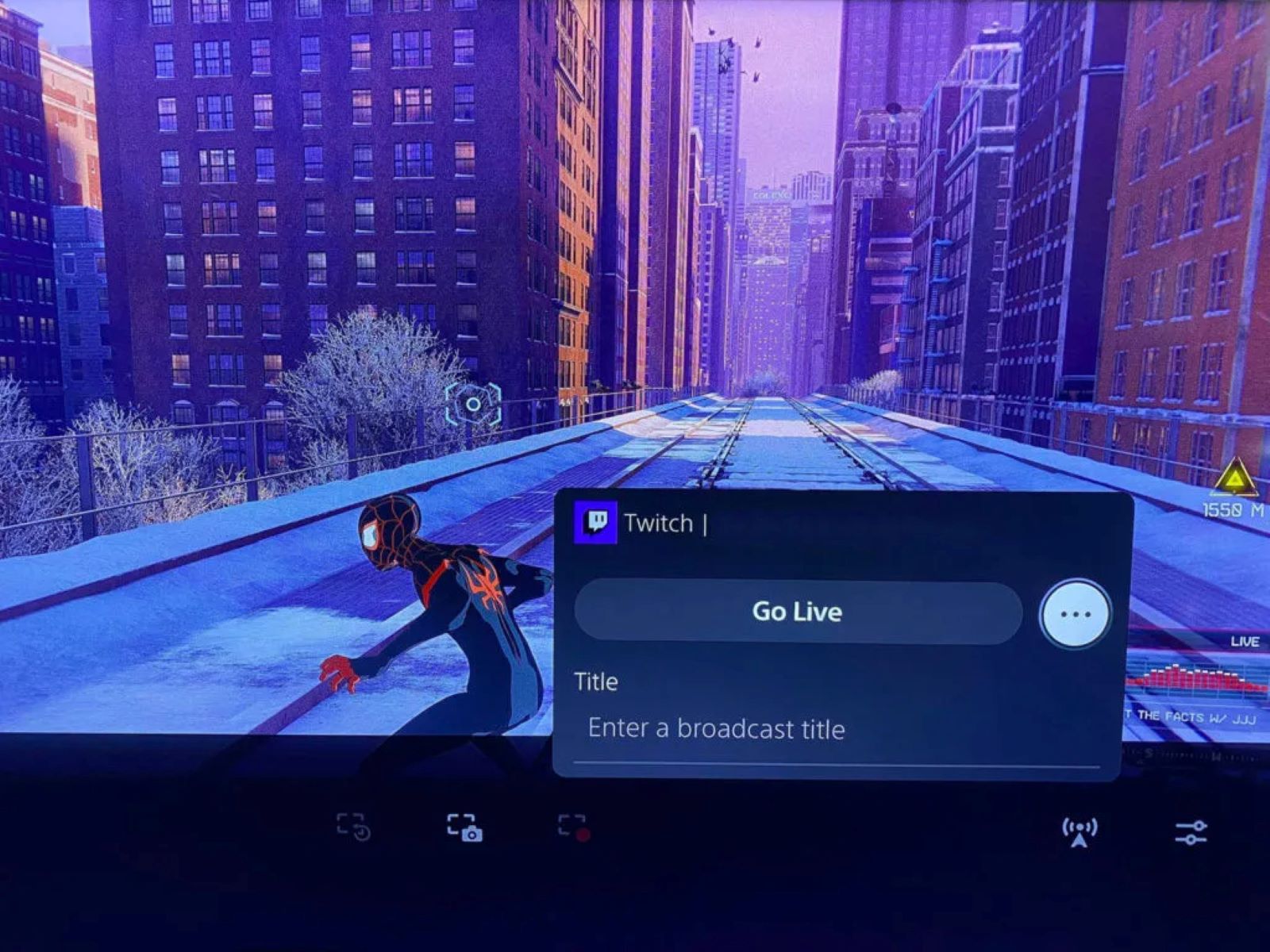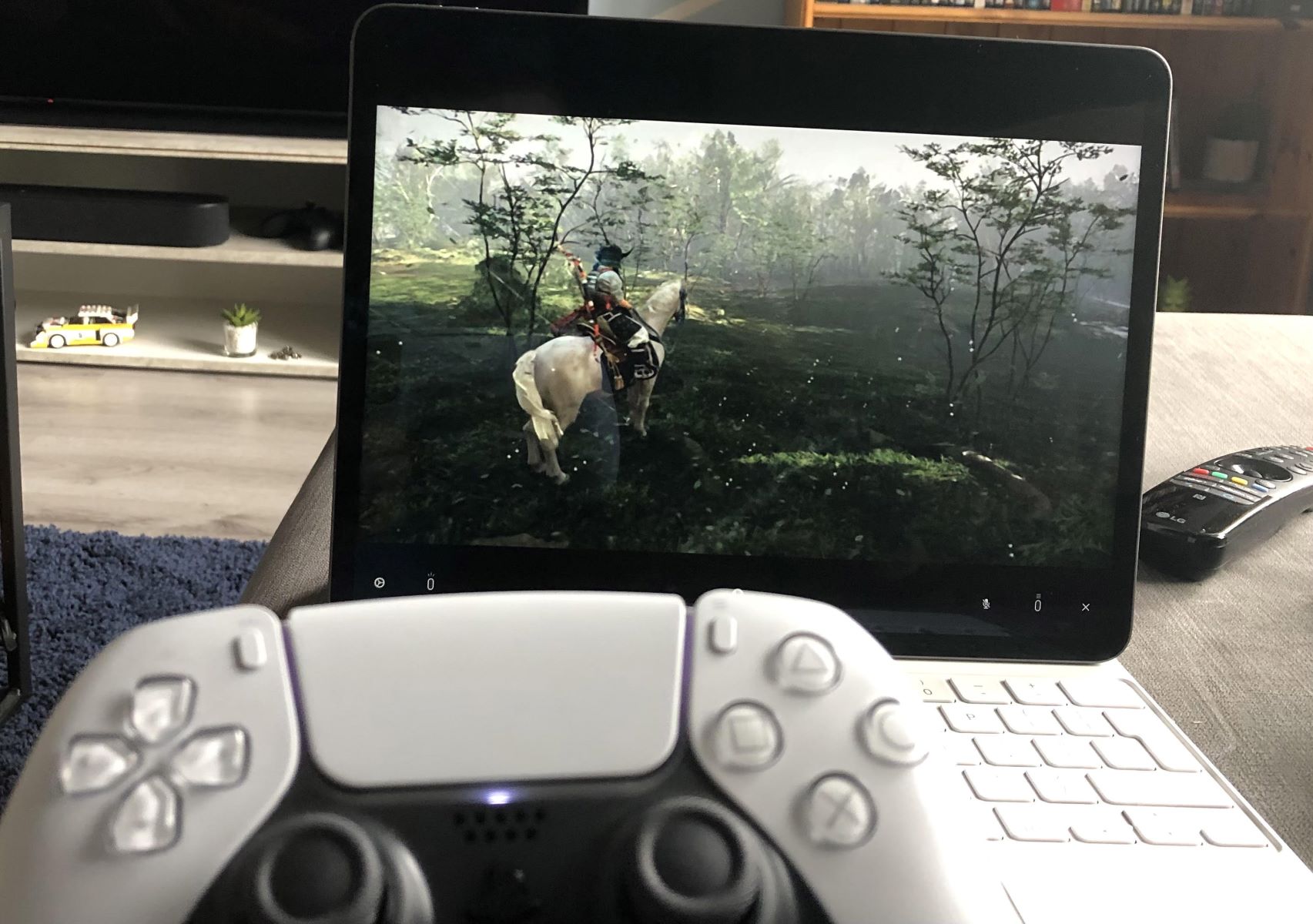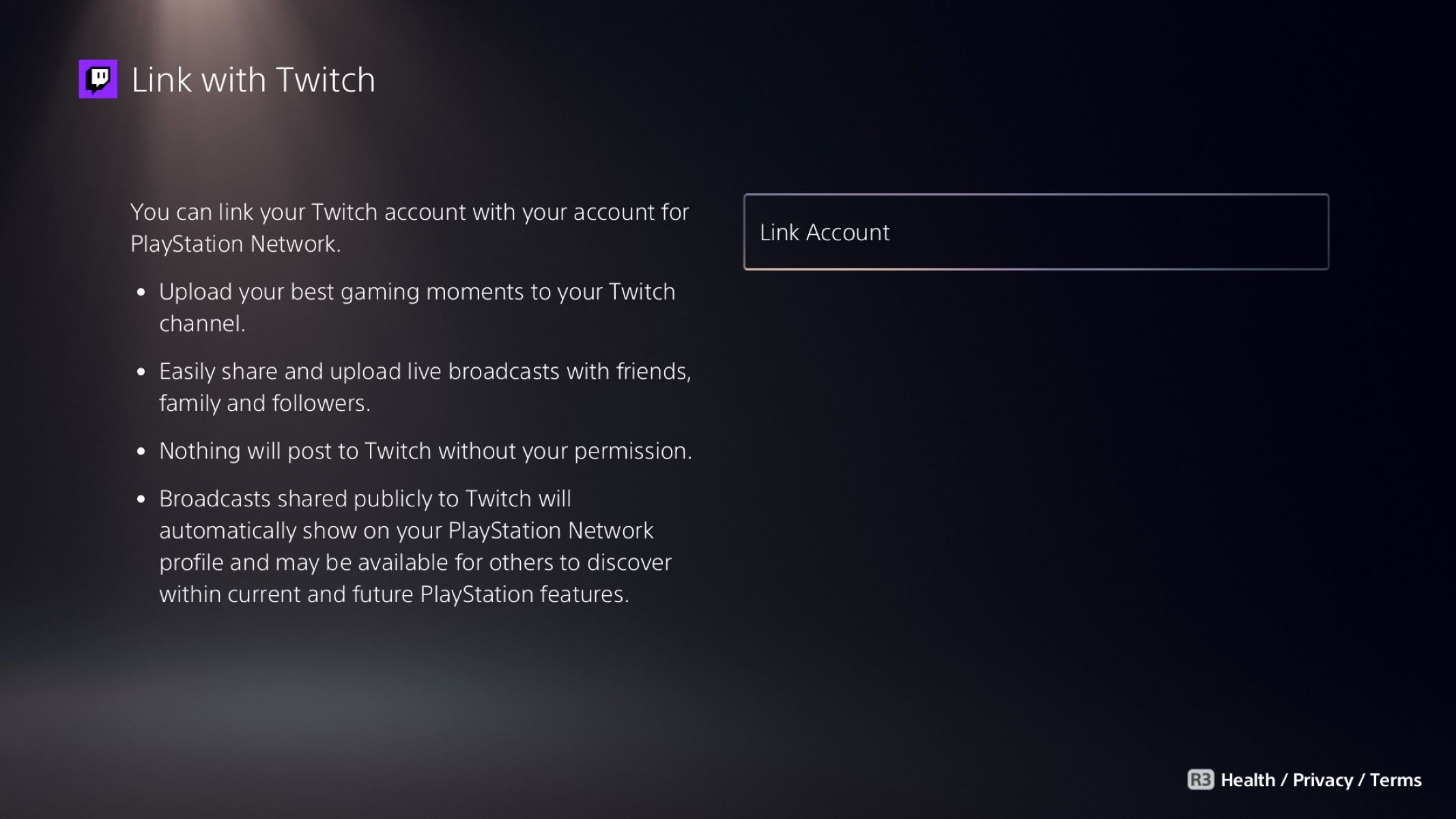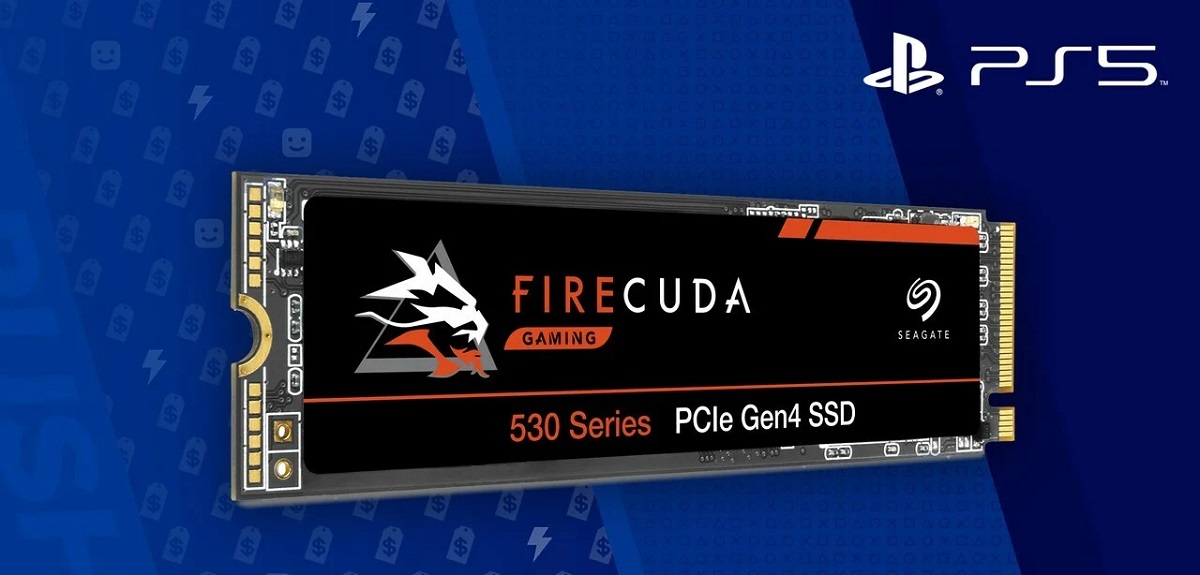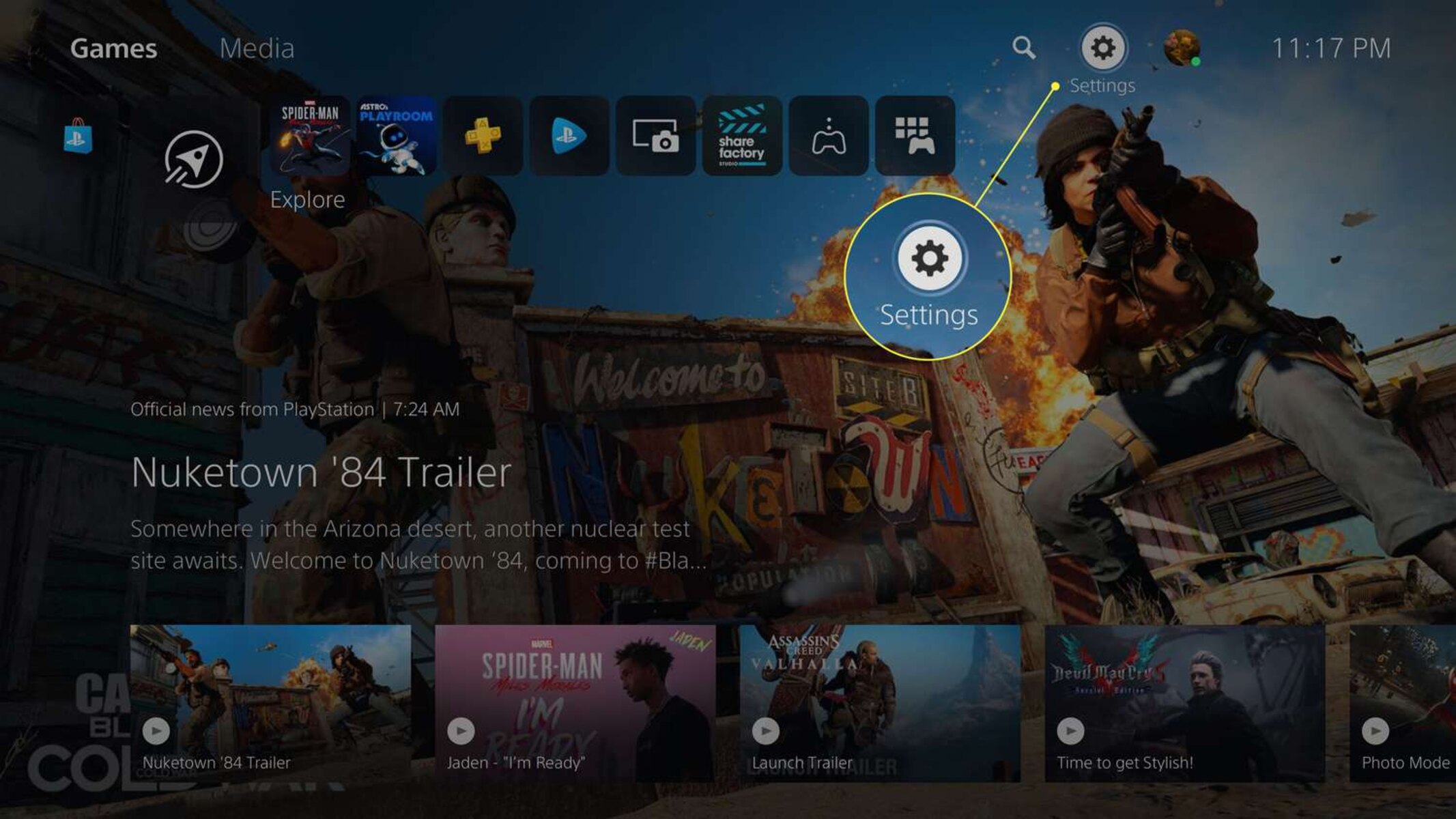Introduction
Welcome to the world of live streaming! Streaming your gameplay from the newly launched PlayStation 5 (PS5) can be an incredibly immersive and entertaining experience for both you and your viewers. Whether you’re an aspiring streamer or looking to take your streaming game to the next level, this guide will provide you with all the information you need to start streaming from your PS5.
Streaming has become a popular way for gamers to connect with audiences and showcase their skills and personalities. With the powerful hardware and advanced features of the PS5, you have the perfect platform to stream high-quality gameplay and engage with viewers in real-time. Whether you want to share your epic victories, teach others how to master a game, or simply entertain an audience with your funny commentary, streaming from your PS5 allows you to reach a wider audience and build a community of like-minded gamers.
Before we dive into the technical aspects of streaming from your PS5, it’s important to choose the right streaming platform for your needs. There are a variety of platforms available, each with its own unique features and audience. Some popular options include Twitch, YouTube Gaming, and Facebook Gaming. Take the time to research and consider which platform aligns best with your goals and target audience.
In the following sections, we’ll guide you through the process of setting up your PS5 for streaming, connecting external hardware, adjusting audio and video settings, customizing overlays and layouts, interacting with chat and viewers, managing stream titles and replay buffers, and promoting and growing your stream. By the end of this guide, you’ll have all the knowledge and tools necessary to start streaming from your PS5 confidently.
So, without further ado, let’s get started and embark on the exciting journey of streaming from your PS5!
Choosing the Right Streaming Platform
When it comes to streaming your gameplay from the PS5, choosing the right streaming platform can make all the difference in reaching your target audience and achieving your streaming goals. There are several popular platforms to consider, each with its own unique features and user base. Let’s take a closer look at some of the top streaming platforms to help you make an informed decision.
Twitch is undoubtedly the most popular streaming platform among gamers. It boasts a massive user base and offers a wide range of features specifically designed for the gaming community. Twitch allows you to easily connect with other gamers and build a dedicated following. It also provides various tools for streamers, such as chat moderation options, subscriber-only streams, and integration with popular third-party extensions.
YouTube Gaming is another prominent platform that offers a seamless streaming experience. If you’re already familiar with creating content on YouTube, streaming on YouTube Gaming can be a natural extension of your existing channel. YouTube Gaming provides robust streaming features, including reliable video quality, live chat, and the ability to monetize your streams through ads and super chats.
For those looking for a more social streaming experience, Facebook Gaming is worth considering. With its massive user base and built-in social features, Facebook Gaming allows you to easily connect with friends and form tight-knit communities. The platform offers features like in-stream monetization, virtual goods, and the ability to schedule and promote your streams in advance.
Additionally, there are other platforms to explore, such as Mixer and DLive, each with their own unique features and audience demographics. It’s essential to research and understand the strengths and weaknesses of each platform to find the one that aligns with your streaming goals and target audience.
Take the time to think about your intended audience, the type of games you plan to stream, and the features that are most important to you. Consider factors like discoverability, community support, monetization options, and ease of use. Moreover, don’t underestimate the value of being on multiple platforms. Diversifying your streaming presence can help you reach a broader audience and mitigate the impact of any platform-specific changes or issues.
Ultimately, the best streaming platform for you will depend on your individual preferences and streaming objectives. Experiment with different platforms, engage with their respective communities, and evaluate which one offers the best overall experience and growth opportunities for your streaming journey.
Setting up Broadcast Settings on PS5
Before you can start live streaming from your PS5, you’ll need to set up your broadcast settings. Here’s a step-by-step guide to help you get everything configured for a smooth streaming experience.
1. First, power on your PS5 and navigate to the settings menu. You can access it by selecting the gear icon on the top right corner of the home screen.
2. In the settings menu, scroll down and select “Users and Accounts,” then choose “Link with Other Services.”
3. Here, you’ll find a list of streaming platforms that the PS5 supports. Select the platform you want to stream to, such as Twitch or YouTube.
4. Next, you’ll be prompted to sign in to your chosen streaming platform using your account credentials. Follow the on-screen instructions to complete the authentication process.
5. Once you’re logged in, return to the settings menu and navigate to “Captures and Broadcasts.”
6. In the “Captures and Broadcasts” menu, select “Broadcast Settings.” Here, you can customize various aspects of your stream, such as resolution, frame rate, audio settings, and more. Make sure to choose settings that are compatible with your internet connection and meet the requirements of your streaming platform.
7. You’ll also find options to enable or disable features like the microphone audio, camera feed, and on-screen display. Adjust these settings according to your preferences and what you want to include in your stream.
8. Additionally, in the “Broadcast Settings” menu, you have the option to set up your stream title and select the category or game you’ll be streaming. Adding a descriptive and compelling title can help attract viewers to your stream.
9. Once you’ve configured all the necessary settings, it’s time to start your stream. Simply launch the game you want to stream, and the PS5 will automatically display a small broadcasting icon on the top right corner of the screen, indicating that you’re live. Take a few moments to ensure everything is working correctly before diving into your gaming session.
10. During your stream, you can also access additional options by pressing the create button on your DualSense controller. This will bring up the create menu, where you can adjust audio and video settings, interact with viewers, and manage other stream-related activities.
Remember, every streaming platform has its own specifications and recommendations for optimal streaming settings. Make sure to familiarize yourself with these guidelines and adjust your PS5 settings accordingly to ensure the best streaming quality and performance.
By following these steps, you’ll have your PS5’s broadcast settings properly configured, allowing you to seamlessly share your gameplay with the world and engage with your audience in real-time.
Connecting External Hardware
Streaming from your PS5 opens up a world of possibilities, especially when it comes to adding external hardware to enhance the quality and functionality of your streams. Here’s a guide to help you connect and utilize external hardware effectively.
1. Webcam: If you want to include a facecam in your stream to add a personal touch, you’ll need a compatible webcam. Connect the webcam to one of the USB ports on your PS5. Once connected, you can adjust the webcam settings in the PS5’s broadcast settings menu to ensure optimal placement and video quality.
2. Microphone: A good microphone is crucial for clear and professional audio in your streams. You can connect an external microphone to your PS5 either via USB or through the 3.5mm audio jack on the controller. Make sure to select the appropriate audio input in the broadcast settings menu so that your voice comes through clearly during your streams.
3. Capture Card: If you want more control over your stream and the ability to overlay alerts, customize layouts, and capture gameplay from other consoles or PCs, you’ll need a capture card. To use a capture card with your PS5, connect the HDMI output of the PS5 to the input of the capture card, and then connect the output of the capture card to your display. Follow the instructions provided by the manufacturer of your capture card for detailed setup and configuration.
4. External Storage: Streaming games can take up a significant amount of storage space on the PS5’s internal drive. Consider connecting an external storage device, such as a USB hard drive, to expand your storage capacity and ensure you have enough space to record and store your streams without impacting the performance of your PS5.
5. Green Screen: For a professional-looking stream, you may want to use a green screen to remove the background and replace it with custom overlays or scenes. Set up the green screen behind you in a well-lit area, and ensure there are no wrinkles or shadows on the screen. Use streaming software or the built-in PS5 broadcasting features to remove the green screen background during your stream.
Remember, when connecting external hardware, it’s essential to use high-quality cables and follow the manufacturer’s instructions for setup and configuration. Additionally, consider the power requirements of your connected devices to ensure your setup is stable and reliable.
By connecting external hardware to your PS5, you can elevate the production value of your streams and offer a more immersive and personalized experience for your viewers. Experiment with different setups and find the combination that best suits your streaming style and goals.
Adjusting Audio and Video Settings
Setting up optimal audio and video settings is crucial for delivering an enjoyable streaming experience to your viewers. Here’s a step-by-step guide to help you adjust the audio and video settings on your PS5 for optimal quality.
1. Audio Settings:
- Start by accessing the audio settings on your PS5. Navigate to the main settings menu and select “Sound.”
- Under the “Audio Output” section, you can choose the audio format that suits your streaming setup. Most streaming platforms recommend using stereo audio, but if you have a more advanced audio setup, you can experiment with higher formats like Dolby Audio.
- Next, you can adjust volume levels for game audio, voice chat, and microphone audio. Ensure that the audio balance is set correctly, so your viewers can hear both your commentary and the in-game sounds clearly.
- If you’re using an external microphone, select the appropriate audio input device in the settings menu to ensure your voice is captured accurately.
- Consider using a headset for monitoring your audio during streams. This will help you detect any issues and make adjustments in real-time.
2. Video Settings:
- To access the video settings on your PS5, go to the main settings menu and select “Screen and Video.”
- Under the “Video Output” section, you can choose the resolution and HDR settings that align with your streaming platform’s guidelines. Select the highest resolution possible without compromising performance.
- Adjust the screen size to fit your display properly, making sure there are no black borders or overscan.
- Explore the “Deep Color Output” settings and enable it if your display supports it. This will enhance color accuracy and vibrancy in your streams.
- If you’re using a capture card, make sure to set the appropriate output resolution and refresh rate that matches your capture card’s specifications.
Take the time to test your audio and video settings before going live to ensure everything is working correctly. Conduct test streams and monitor the quality of both audio and video to make any necessary adjustments.
Additionally, lighting plays a crucial role in the visual quality of your streams. Make sure you have adequate lighting in your streaming area to avoid a grainy or dim appearance. Natural lighting or well-placed artificial lights can significantly enhance the overall quality of your stream’s video output.
Remember, the specific settings and configurations may vary depending on your streaming platform and personal preferences. It’s important to familiarize yourself with the requirements and recommended settings of your chosen platform and adjust your PS5 settings accordingly.
By taking the time to adjust your audio and video settings properly, you’ll ensure that your viewers have a visually appealing and immersive experience while watching your streams.
Customizing Overlay and Layout
Customizing your overlay and layout can add a personalized touch to your stream and make it visually engaging for your viewers. Here’s a guide to help you customize the overlay and layout on your PS5 streams.
1. Streaming Software:
If you’re looking for more advanced customization options, consider using streaming software such as OBS (Open Broadcasting Software) or Streamlabs OBS. These software packages provide a wide range of features and tools for creating custom overlays, layouts, and scene transitions.
2. Overlays and Widgets:
- Overlays are graphical elements that are superimposed on top of your gameplay footage. They can include your stream’s logo, social media handles, chat box, donation alerts, and more.
- Using the streaming software, you can create or download pre-made overlays and widgets that fit your personal branding or desired aesthetic.
- Customize the size, position, and transparency of each overlay element to ensure they don’t obstruct important parts of the gameplay.
- Experiment with different styles and designs to find the one that best suits your stream and personality.
3. Chat Box:
- Allowing chat interaction in your streams can help foster engagement with your viewers. Most streaming software allows you to add a live chat box to your overlay.
- Position the chat box in a location that is easily visible without blocking important elements of the gameplay. You can customize the font, color, and size of the chat text to make it more legible.
- Consider using chat moderation tools to filter out spam or inappropriate messages to ensure a positive and welcoming chat environment.
4. Scene Transitions:
- Scene transitions are used to smoothly transition between different scenes or overlays during your stream.
- You can set up various scene transitions, such as fade, slide, or cut, to add a professional and polished look to your stream.
- Experiment with different transitions and find the one that best suits the tone and style of your stream.
Remember to regularly review and update your overlays and layout to keep your stream fresh and visually appealing. Pay attention to your viewers’ feedback and make adjustments based on their preferences.
It’s important to strike a balance between a visually appealing overlay and ensuring that the gameplay remains the main focus. Avoid cluttering the screen with too many elements that may distract viewers from the gameplay itself.
By customizing your overlay and layout, you’ll create a unique and immersive streaming experience that reflects your brand and personality. Experiment with different designs, have fun with it, and don’t be afraid to get creative!
Testing and Calibrating Stream
Before going live with your stream, it’s crucial to thoroughly test and calibrate your setup to ensure everything is working correctly. Here’s a guide to help you test and calibrate your stream for optimal performance.
1. Test Stream:
- Start by conducting test streams on your chosen platform to ensure that your audio and video quality is satisfactory and that all overlay elements are displaying correctly.
- During the test stream, pay attention to the volume levels of your microphone and game audio. Make any necessary adjustments to ensure you’re audible over the game sounds. Additionally, monitor the output video quality to ensure there are no issues with resolution, frame rate, or visual artifacts.
- Encourage friends or viewers to join your test stream and provide feedback on the quality, clarity, and overall experience of the stream. This will help identify any areas that require improvement.
- Take the time to test different games and streaming scenarios to ensure your setup can handle a variety of content without any performance issues.
2. Calibrate Audio:
- Use soundcheck features in your streaming software or audio management tools to ensure that your microphone and game audio levels are balanced.
- Adjust the microphone gain settings to avoid distortion or clipping. Test different speaking volumes and adjust the settings accordingly.
- Monitor audio levels during intense gameplay to ensure that the game sounds remain audible without overpowering your commentary.
- Consider doing a soundcheck with a friend or viewer to get feedback on the overall audio quality, clarity, and volume.
3. Calibrate Video:
- Pay attention to the video quality, resolution, and frame rate during your test streams. Adjust the settings in your streaming software or PS5 settings to achieve the desired output quality.
- Check for any visual artifacts, screen tearing, or delay between your actions and their appearance on the stream. Adjust the settings and configuration of your capture card or streaming software to minimize these issues.
- Ensure that your webcam, if used, is positioned properly and providing a clear and properly lit image.
4. Network Stability:
- Check your internet connection stability and ensure you have sufficient upload bandwidth to handle the stream. Run a speed test to verify your connection’s upload speed.
- Consider using a wired internet connection instead of Wi-Fi to maximize stability and minimize potential interruptions or lag.
- Stream during different times of the day to identify any network congestion issues that may impact your stream quality.
- Monitor your stream’s bitrate and adjust it according to your available bandwidth to avoid buffering or pixelation issues.
Regularly perform these tests and calibrations to maintain the quality and reliability of your stream. Keep an eye on viewer feedback and make necessary adjustments based on their experience.
Remember, a successful stream requires a combination of high-quality audio, clear video, stable network connection, and responsive chat interaction. Through consistent testing and calibration, you’ll be able to deliver a seamless and enjoyable streaming experience for your audience.
Interacting with Chat and Viewers
Engaging with your chat and viewers is a crucial aspect of streaming. Building a sense of community and fostering interaction can create a more enjoyable and memorable experience for both you and your viewers. Here are some tips on how to effectively interact with chat and engage with your audience during your streams.
1. Monitor Chat:
- Keep an eye on your chat window or monitor throughout your stream to stay connected with your viewers. Depending on your streaming setup, you can position the chat window on a secondary screen, a mobile device, or utilize chat overlays within your streaming software.
- Respond to messages and questions in a timely manner. Make an effort to address your viewers by their usernames to create a more personal connection.
- If your chat becomes busy or moves quickly, consider assigning moderators to help manage the chat and ensure a positive and friendly environment.
2. Engage with Viewers:
- Interact with your viewers by asking for their opinions, feedback, or suggestions about the game you’re playing or any other topics related to your stream. This encourages audience involvement and makes them feel valued.
- Take breaks during your stream to personally greet new viewers or acknowledge those who have been watching for a while. This helps to foster a sense of community and inclusivity.
- Show genuine interest in your viewers’ comments and questions. Engage in conversations, listen actively, and provide thoughtful responses to create meaningful interactions.
- Encourage viewers to follow or subscribe to your channel to receive notifications about future streams and show appreciation for their support.
3. Implement Chat Commands and Alerts:
- Set up chat commands that can provide useful information or answer frequently asked questions. For example, you can set a command that displays your streaming schedule or social media links.
- Utilize stream alerts, such as follower or donation notifications, to acknowledge and thank viewers for their support. Customize these alerts to reflect your stream’s personality and theme.
- Consider incorporating interactive elements into your stream, such as polls, games, or reward systems, to encourage viewer participation and make the stream more enjoyable.
4. Create Offline Interaction:
- Stay engaged with your community even when you’re not live by interacting on social media platforms or through a dedicated Discord server. This keeps your viewers connected with one another and creates a space for ongoing conversation and updates.
- Respond to comments and messages on social media, as well as emails or direct messages from your viewers. This shows that you value their support and further strengthens your relationship.
Interacting with chat and viewers is not only about responding to messages but creating a welcoming and interactive environment. Foster a positive atmosphere, encourage inclusivity, and be respectful to your viewers, as well as their opinions and feedback. Building a strong and supportive community will benefit both your stream and your viewers’ experience.
Managing Stream Titles and Replay Buffer
Managing your stream titles and utilizing the replay buffer feature can enhance the organization and quality of your streams. Here’s a guide on how to effectively manage your stream titles and make use of the replay buffer feature.
1. Stream Titles:
- Stream titles play a crucial role in attracting viewers and conveying what your stream is about. Craft descriptive and engaging titles that accurately represent the content of your stream.
- Consider including relevant keywords, such as the game title or any special events or challenges you’ll be undertaking during the stream, to improve discoverability.
- Regularly update your stream titles to reflect ongoing gameplay, special occasions, or any specific focus you want to highlight for each session.
- Be creative with your titles while keeping them concise and informative.
2. Replay Buffer:
- The replay buffer feature allows you to capture a specific period of gameplay without continuously recording the entire stream session.
- Configure the length of the replay buffer to suit your needs and preferences. It’s typically set to a default duration, such as 30 seconds to 1 minute, that can be increased or decreased depending on your requirements.
- Assign a hotkey or button combination to activate the replay buffer when something exciting or noteworthy happens during your stream. This allows you to save and capture those moments without needing to manually record the entire stream.
- After the stream, review the replay buffer and select any highlights or memorable moments to share on social media or create highlight videos for your viewers.
3. Organizing and Archiving Streams:
- Consider creating a system to organize and archive your past streams. This can include creating playlists on your streaming platform or utilizing third-party tools for stream management.
- Use descriptive titles and proper categorization to make it easier for viewers to navigate and find specific streams in your archive.
- Consider highlighting particularly memorable or popular streams in a separate section of your channel or creating “best of” compilations.
4. Stream Information Panels:
- Utilize the information panels on your streaming platform to provide additional context about your stream, such as your schedule, social media links, donation methods, or other relevant details.
- Regularly update these panels to keep your viewers informed about any changes or updates.
Being proactive in managing your stream titles and utilizing the replay buffer feature can streamline the organization of your content and make it easier for viewers to discover and enjoy your streams. Experiment with different approaches and find a system that works best for you and your community.
Promoting and Growing Your Stream
Building an audience and growing your stream requires proactive promotion and strategic efforts. Here are some effective ways to promote and grow your stream:
1. Social Media Presence:
- Establish a strong presence on social media platforms, such as Twitter, Instagram, and Facebook, where you can engage with your audience on a more personal level.
- Regularly post highlights, teasers, and updates about your streams to generate interest and drive viewership.
- Interact with other content creators and gaming communities to expand your network and attract potential viewers.
- Utilize relevant hashtags and tags to increase your discoverability among people interested in your gaming niche.
2. Networking:
- Collaborate with other streamers or content creators in your community. This can involve co-streaming, guest appearances, or hosting each other’s streams, which can help you tap into their audience and vice versa.
- Participate in community events, tournaments, or charity streams where you can showcase your skills and personality while engaging with a wider audience.
- Attend gaming conventions or meetups to connect with fellow gamers, industry professionals, and potential viewers.
3. Stream Promotion:
- Optimize your streaming platform profile with engaging artwork, channel description, and a compelling stream schedule to attract potential viewers.
- Consider leveraging the advertising options provided by your chosen streaming platform, such as paid promotions or sponsorships, to expand your reach and attract new viewers.
- Utilize influencer marketing by seeking collaborations with relevant influencers or content creators who can promote your stream to their audience.
- Engage with streaming communities and forums, such as Reddit or Discord, by sharing valuable insights, participating in discussions, and promoting your stream within the community guidelines.
4. Consistent Streaming Schedule:
- Establish a consistent streaming schedule and communicate it clearly to your audience. Regularly streaming at the same time creates a habit for your viewers and helps them anticipate and plan to watch your streams.
- Notify your audience in advance about any schedule changes or special events to keep them engaged and excited about your upcoming streams.
- Consider offering exclusive streams or rewards to loyal viewers to encourage their continued support and engagement.
5. Viewer Engagement:
- Encourage your viewers to spread the word about your stream by providing shareable content, like clips or highlights, that they can easily share on their own social media platforms.
- Interact with your viewers during streams by responding to chat messages, acknowledging new viewers, and incorporating their suggestions or feedback into your gameplay or content.
- Implement loyalty programs, such as loyalty points or badges, to reward active and engaged viewers, which can inspire them to continue supporting your stream.
Growing your stream takes time and effort, so remain patient and consistent. Analyze your stream statistics, gather viewer feedback, and adapt your strategies as needed to improve your content and engagement. Remember, building a loyal and supportive community is as important as attracting new viewers, so focus on nurturing those relationships as you promote and grow your stream.
Conclusion
Congratulations! You have now reached the end of this comprehensive guide on streaming from your PS5. We have covered various aspects, from choosing the right streaming platform to promoting and growing your stream. By following these guidelines and incorporating your unique style and creativity, you can create an engaging and successful streaming experience.
Remember, success in streaming takes time, dedication, and perseverance. It’s important to continuously learn, adapt, and experiment with different strategies to find what works best for you and your audience. Building a loyal and supportive community is key to long-term success and growth.
As you embark on your streaming journey, always prioritize the quality of your content and the experience for your viewers. Engage with your audience, foster a welcoming community, and provide value through entertaining gameplay, insightful commentary, and interactive engagement.
Don’t forget to continuously test and calibrate your audio and video settings to ensure optimal quality and maintain a professional streaming experience. Customize your overlay and layout to create a visually appealing stream and take advantage of the replay buffer feature to capture and share exciting moments from your stream.
Promote your stream through social media, networking, and consistent streaming schedules. Engage with your viewers, respond to their comments and questions, and create a sense of community through genuine interaction.
Finally, always be open to feedback and continuously strive to improve. Analyze your stream analytics, seek viewer input, and adapt your content and strategies accordingly.
Streaming from your PS5 is an exciting and rewarding endeavor that allows you to share your gaming experiences, connect with others, and build a community. Embrace the journey, have fun, and enjoy the process of creating entertaining and memorable streams.
Now it’s time to grab your controller, fire up your game, and go live! Happy streaming!







